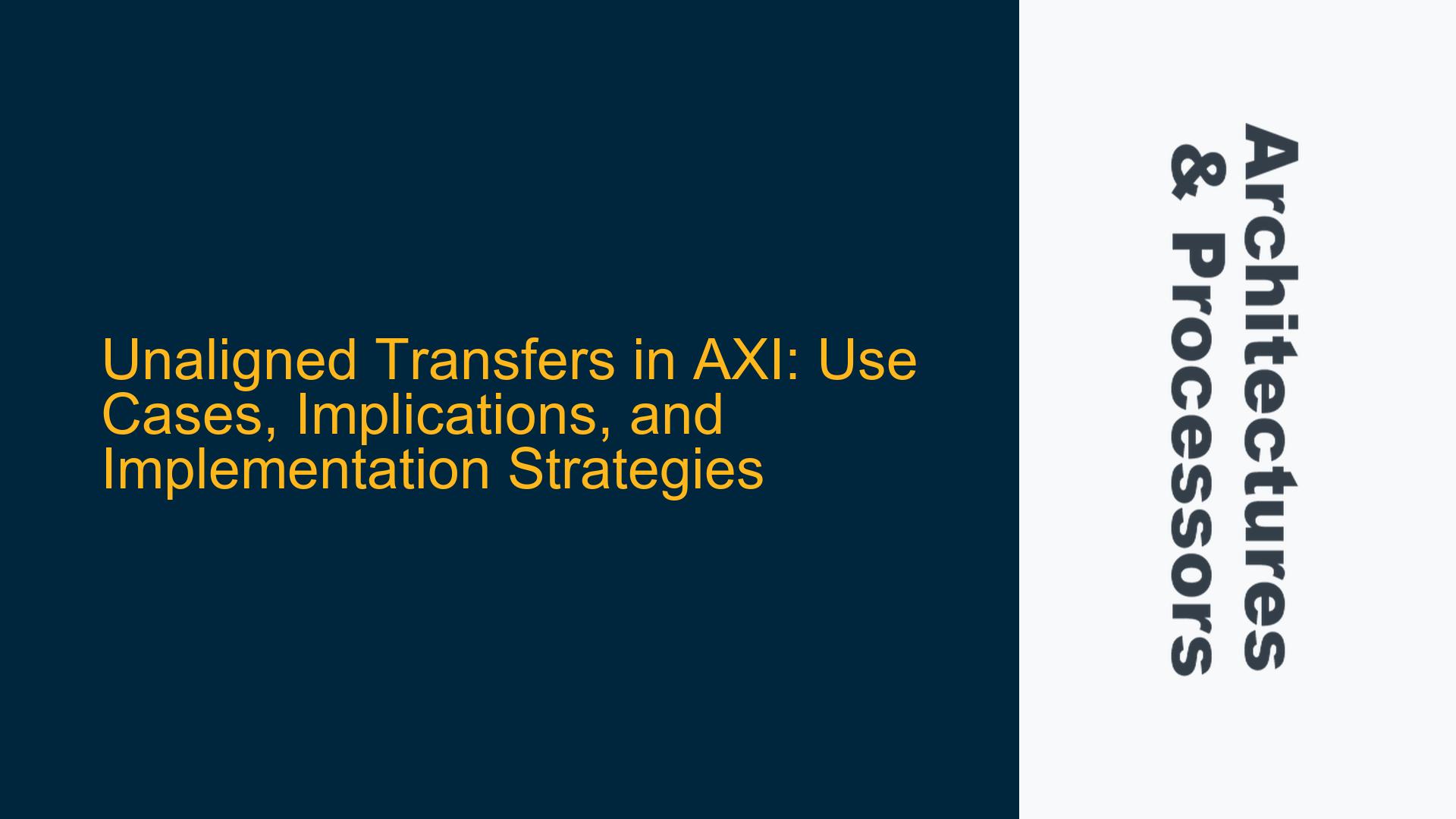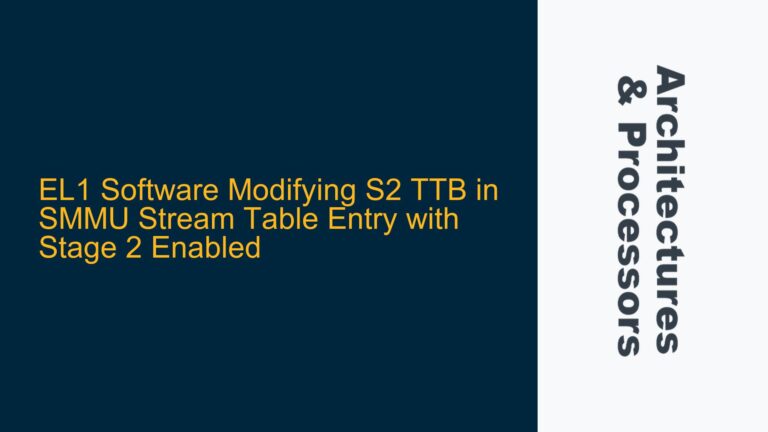ARM AXI Protocol Support for Unaligned Transfers
The ARM AXI (Advanced eXtensible Interface) protocol is designed to support high-performance, high-frequency system-on-chip (SoC) designs. One of its key features is the ability to handle unaligned transfers, which are memory accesses that do not align with the natural boundaries of the data bus width. For example, a 32-bit data bus typically expects addresses to be aligned on 4-byte boundaries (0x0, 0x4, 0x8, etc.). An unaligned transfer would occur if a master attempts to read or write data starting at an address like 0x3 or 0x7.
The AXI protocol supports unaligned transfers primarily to accommodate software flexibility. Software developers often do not need to worry about data alignment, especially in high-level programming languages or when dealing with complex data structures. This flexibility simplifies software development but introduces additional complexity in the hardware implementation. The AXI protocol bridges this gap by allowing unaligned addresses to be passed directly from software to hardware, while providing mechanisms like write strobes (WSTRB) and address alignment handling to ensure correct data transfer.
Unaligned transfers are particularly relevant in scenarios where data structures are packed or when data is transferred between heterogeneous systems with different alignment requirements. For instance, a network packet might contain headers and payloads that are not aligned to the natural boundaries of the AXI bus. In such cases, unaligned transfers enable efficient data movement without requiring software to perform costly alignment operations.
Hardware and Software Implications of Unaligned Address Handling
From a hardware perspective, unaligned transfers introduce several challenges. For write transactions, the AXI protocol uses the WSTRB signal to indicate which byte lanes of the data bus contain valid data. This allows the master to specify exactly which bytes should be written, regardless of the address alignment. For example, if a master initiates a write transaction starting at address 0x3 with a data width of 32 bits, the WSTRB signal would be set to 0b1110, indicating that the upper three bytes of the data bus contain valid data.
However, for read transactions, the AXI protocol does not provide an equivalent strobe mechanism. Instead, the slave must return the full data width specified by the ARSIZE signal, even if the requested address is unaligned. This can lead to inefficiencies, as the slave may need to fetch more data than required and discard the unused portions. Some slaves may optimize this process by using the unaligned address information to reduce power consumption, but this adds complexity to the design.
From a software perspective, unaligned transfers simplify development by eliminating the need for explicit alignment operations. However, they can also introduce performance overheads, as unaligned accesses may require multiple bus transactions or additional processing by the hardware. For example, an unaligned read spanning two 32-bit words would require the AXI master to issue two separate read requests, increasing latency and reducing throughput.
In systems where performance is critical, software developers may choose to align data structures manually to avoid the overhead of unaligned transfers. However, this approach requires careful consideration of the trade-offs between software complexity and hardware efficiency.
Optimizing AXI Bus Fabric for Unaligned Transfers
To optimize the handling of unaligned transfers in an AXI-based system, designers must consider several factors, including bus fabric configuration, slave behavior, and power consumption. One common approach is to design the AXI interconnect to handle unaligned addresses transparently. This can be achieved by implementing address alignment logic within the interconnect, which converts unaligned addresses into aligned addresses and adjusts the WSTRB signals accordingly.
For write transactions, the interconnect can use the WSTRB signal to mask out invalid byte lanes and ensure that only the requested data is written to the slave. For read transactions, the interconnect can issue aligned read requests to the slave and then extract the relevant bytes based on the original unaligned address. This approach simplifies the design of individual slaves but may increase the complexity of the interconnect.
Another optimization strategy is to design slaves that can handle unaligned addresses directly. This requires the slave to implement logic for extracting or inserting data at unaligned offsets, which can be challenging for high-performance designs. However, it can reduce the overhead of unaligned transfers by eliminating the need for multiple bus transactions.
Power consumption is another important consideration when optimizing for unaligned transfers. In some cases, it may be beneficial to disable unused byte lanes during read transactions to reduce dynamic power consumption. For example, if a read request starts at an unaligned address, the slave can disable the lower byte lanes and only drive the relevant data onto the bus. This approach requires careful coordination between the master and slave to ensure correct data transfer.
In summary, unaligned transfers in the AXI protocol provide flexibility for software developers but introduce complexity in hardware implementation. By understanding the implications of unaligned address handling and optimizing the bus fabric accordingly, designers can achieve a balance between performance, power efficiency, and design complexity. The key is to carefully analyze the specific requirements of the system and choose the appropriate strategies for handling unaligned transfers.






